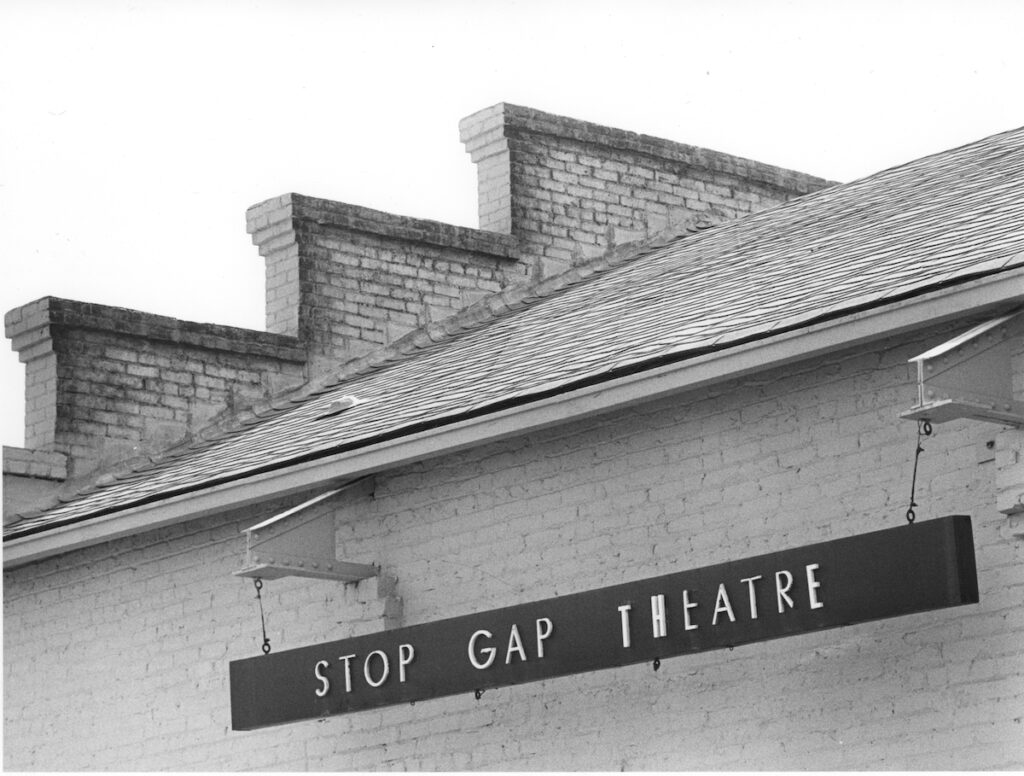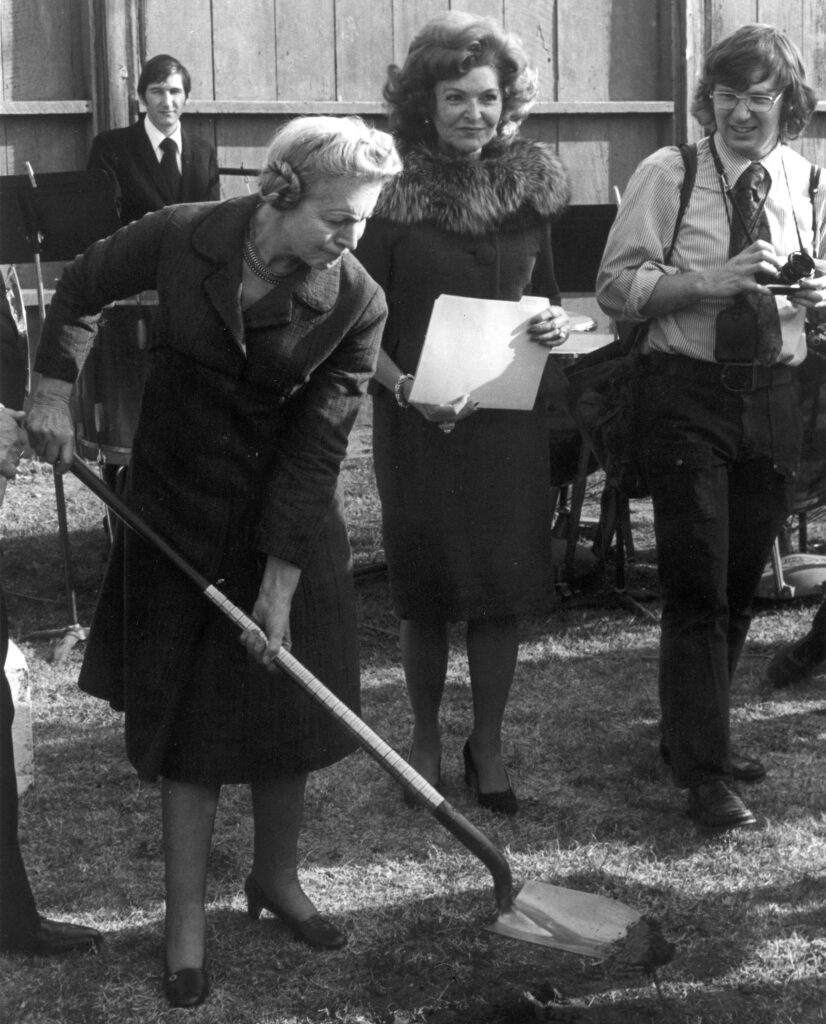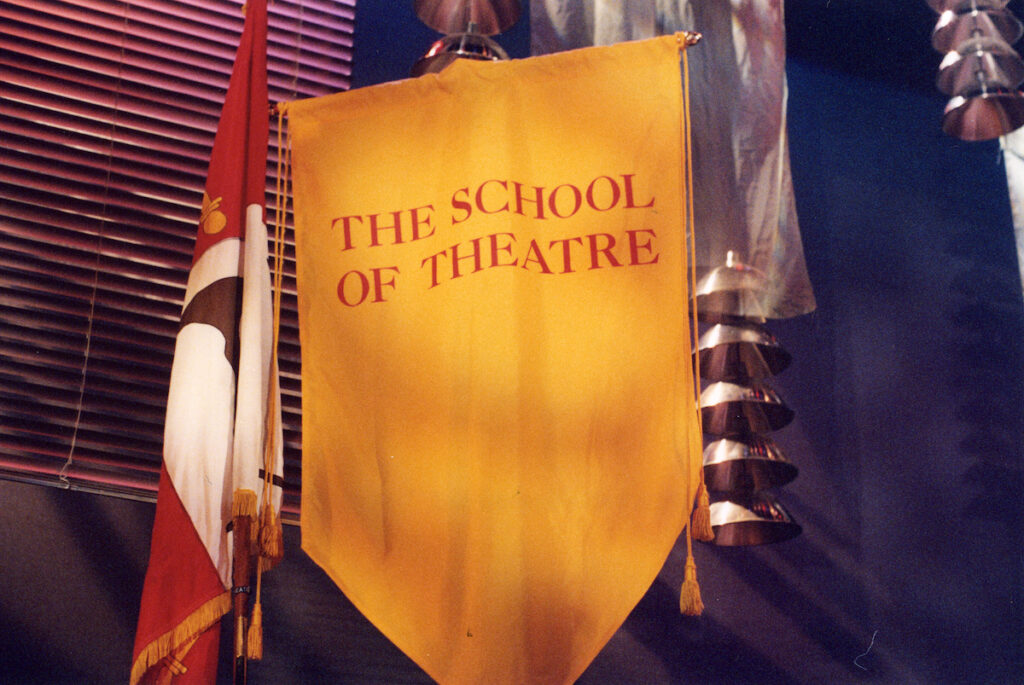1880: USC Founding
Instruction in the speech arts begins.
1895: First Program
School of Elocution offers a two-year curriculum in voice culture and dramatic interpretation.
1920: Major Degree
The first four-act play ever produced, Booth Tarkington’s Mister Antonio, celebrates the granting of an oratory degree.
Read about the School’s past 75 years and where it’s headed into the future.
1945: Drama Department
Drama is officially a department, with William C. DeMille as chair until 1953. His office is in the basement of Old College, where he teaches and rehearses.
1945: Touchstone Theatre
Touchstone Theatre in Old College is primarily a teaching space. The Scene Dock, where sets are built and painted, is located in a former barn across Figueroa Street.
1946: Institute of the Arts
The Institute of the Arts is established, until 1967, to include Cinema, Drama, Fine Arts, Radio, Speech and the College of Music.

1948: Stop Gap Theatre
Old College is torn down, including Touchstone Theatre, and the Stop Gap Theatre becomes the new home for the drama department. The Scene Dock relocates to 35th Street, near Hoover.
1950: First PhD
The first PhD degree with an emphasis in the field of drama is granted with the formation of the Division of Communications.
1964: Scene Dock Relocations
The Scene Dock is relocated to a warehouse on 37th Street, near Vermont. In 1976, the Costume Shop is located on the second floor.
1966: School of Performing Arts
The School of Performing Arts is created to include the School of Music, and the divisions of Cinema and Drama.
1966: Park View
The Division of Drama moves to larger headquarters at Park View.
1966: Edinburgh Fringe Festival
The Festival Theatre USC-USA theatre company is created. For 23 seasons between 1966 and 2005, USC students, alumni, and faculty travel to perform at the celebrated Edinburgh Fringe Festival.
1970: BFA and MFA programs
The Division of Drama establishes BFA and MFA professional degree programs.

1976: Bing Theatre
The Bing Theatre is built, thanks to the generosity of USC Trustee Anna Bing Arnold.
1976: Greenroom Theatre
A former sculpture studio (previously a stable, then storage for the Trojan Marching Band) reaches its final incarnation as the Greenroom Theatre.
1984: The School of Cinema-Television
The School of Performing Arts is disbanded and separate schools are established for Music and Cinema-Television. The Division of Drama is housed in Cinema-Television until 1990.
1984: Drama Center
An on-campus building, formerly a communications center for the Olympics, becomes the Drama Center.

1990: School of Theatre
Based on its excellence and the strength of its programs, the Division of Drama becomes the independent School of Theatre on July 1.
1990: Stop Gap Theatre demolished
Stop Gap Theatre is torn down for not meeting earthquake codes.
1991: Massman Theatre
The Drama Center auditorium is converted into Massman Theatre.
1993: Costume Shop moves
The Costume Shop and classes previously taught in the University Church basement and sanctuary, and in Taper Hall, are moved into the Physical Education Building.
1997: Scene Dock Theatre
The Greenroom Theatre is destroyed by fire in 1996. The Scene Shop is converted into the 99-seat Scene Dock Theatre to replace the Greenroom Theatre. The Scene Shop moves to 32nd Street, opposite the Robert Zemeckis Center.
2008: Technical Theatre Laboratory
The Technical Theatre Laboratory, an 8,000-square-foot space housing the Scene hop and storage, opens.
2008: McClintock Building
The McClintock building is completed, providing new classroom space, offices, a voice-over recording studio and a black box theatre.
2012: School of Dramatic Arts
The School of Theatre is renamed the School of Dramatic Arts to better represent the training students receive.
2017: Career Center
The first-ever Career Center launches, providing graduating students opportunities, resources and management-style services.
2021: New Building
A new building is announced with the remodel of the historic building that previously housed the United University Church.
This article appeared in the 2021-22 issue of Callboard magazine. Read more stories from the issue online.